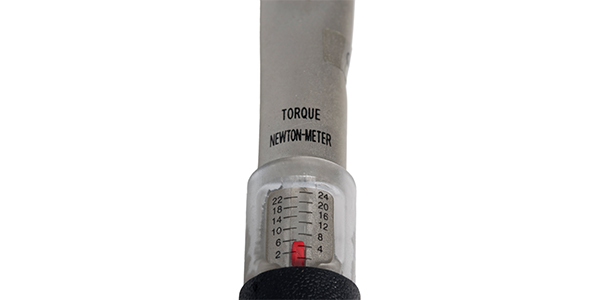
The desired result of tightening a fastener is to obtain a proper clamping force between parts. The clamping force prevents loosening when the vehicle is in use and external forces act on the clamped parts. All fasteners have a specified torque. The method used for a particular application is determined by engineering and specified in the service information. It is necessary to apply the fastener torque to the specific fastener identified.
There are three different methods for the specification of tightening fasteners:
• Torque (T)
• Torque + Angle (TA)
• Torque + Angle-to-Yield (TAY) (sometimes referred to Torque-to-Yield (TTY)).
Torque
A fastener with a torque specification can be tightened with a conventional torque wrench. Generally, externally threaded fasteners (bolts, screws, studs) tightened to this specification method can be reused unless otherwise specified in the service information.
Torque and Angle
A fastener with a torque and angle specification must be tightened first to the torque part of the specification and then tightened further by the addition of the specified angle. The angle must be applied relative to the mating fastener, if present, or relative to the mating surface.
Torque and Angle-to-Yield
A fastener with a torque and angle-to-yield specification is tightened in the same way as the fastener with the torque and angle specification. The difference between a torque + angle specification and a torque and angle-to-yield specification is that the tightening results in permanent deformation of the externally threaded fastener. Externally threaded fasteners tightened to this specification method must not be reused and must ALWAYS be replaced if loosened.
Tightening in Stages
Generally, service information specifies a fastener tightening specification in stages. An individual fastener with a torque specification is tightened to the specified torque in one pass.
For torque and angle and torque and angle-to-yield specification fasteners, the fasteners are tightened in stages. All the fasteners are tightened to a torque specification on the first pass. Next, they receive another tightening to a specified angle on the second pass. Sometimes more than two passes are required.
Reusing the Fastener
For an externally threaded fastener (bolt, screw or stud) as a spring. As the threads are tightened, the spring is stretched. With a conventional torque or torque + angle tightening specification, the spring returns to its original length when loosened. In the case of a torque + angle-to-yield tightening specification, the spring is overstretched (plastically deformed) and does not return to its original length. For this reason, the torque + angle-to-yield tightening specification requires the externally threaded fastener to ALWAYS be replaced.













